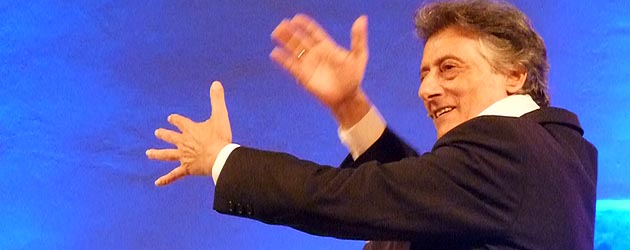Text and photos: Estela Zatania
Saturday, July 26th, 2014. 11:00pm. Plaza del Hospitalillo, Lebrija
GEARING UP FOR THE GOLDEN ANNIVERSARY
Cante: Jesús Méndez, Inés Bacán, Pepe Montaraz, Miguel Funi. Dance: Concha Vargas with the singing of Carmen Vargas and Rubio de Pruna, the guitars of Pedro Vargas and Luis Carrasco and the palmas of Antonio el Maleno, Juan Vargas “Pike” and José Vargas “Kilito”. Accompaniment guitars: Manuel Valencia, Eusebio José García, Pitín hijo.
With 49 years since the first time it was celebrated, the Caracolá Lebrijana can already be proud of its half-century of history. It was in 1966 when the organizers saw the need to create an event worthy of the times and of the importance of Lebrija in the history of flamenco, a strategic location in the geography of this art-form where artistic influences of both Seville and Cádiz come together yielding a unique and unmistakable personality, even in the way the rhythms are expressed.
After a full week of parallel activities, recitals, exhibits and conferences, and with plans already in the air for next year’s 50th anniversary celebration, this edition was like a summary of the flamenco character of Lebrija. The singular Miguel Funi, the indefinable Inés Bacán, the knowledgeable Pepe Montaraz whose name graces the local flamenco club and the explosive Concha Vargas. Some important interpreters were missing, most notably Juan Peña “Lebrijano”, but it would be fair to say this city’s flamenco personality was well-represented in all its diversity.
The only artist from “outside” was Jerez singer Jesús Méndez, appearing for the first time at the Caracolá. He opened the evening as he had to run off to another festival this same night…like in the old days when there were so many cante festivals, artists would often dash from one to another, sometimes with long distances to cover. In the Hospitalito plaza of the Santa María de la Oliva church, with the mute complicity of the lovely Giraldilla tower, Méndez began the rite with bulería por soleá using the full force of his lung-power. He was accompanied on guitar by another Jerez artist, Manuel Valencia, recent winner of the Venencia Flamenca of Los Palacios. In siguiriyas, Jesús delivered a powerful gust of Jerez feeling, with the flavor of San Miguel. He dedicated some fandangos to Dolores Agujetas who was in the audience, and wrapped up his performance with bulerías that included Utrera sounds, a touch of Caracol and some Lebrija romances, and the audience showed their gratitude with a standing ovation.
The rest of the program was straight-ahead made in Lebrija. Inés Bacán was introduced as “the last artistic surprise from the Pinini clan”. With her nephews Vicente and Juan Peña providing palmas, and Pedro María Peña on guitar, she began with nanas. The contrast with the aggressive Jerez singer who preceded was total. Fandangos por soleá, which is not a style of cante but a way of adapting it to compás, continues to be one of the great specialties of the Utrera-Lebrija axis, less cloying, more substantial than the customary free-form fandangos most singers interpret. After siguiriyas, Inés sang soleá to the brisk compás typical of the area. She closed with bulerías, and once again it’s the compás, now more relaxed than the standard, that reminds us we’re in Seville province. A discreet fiesta finale was followed by tonás to close.
Pepe Montaraz is little-known outside of Lebrija, except as the singer whose name graces the town’s flamenco association. However, he is a veteran worth discovering, with much knowledge and a great love of flamenco. With Eusebio José García on guitar, he offered a varied repertoire that included malagueñas with rondeñas, tientos tangos, caña and fandangos, all warmly received by the audience.
Miguel Funi is an institution in Lebrija, the most original piece of this town’s flamenco machinery and the eldest active interpreter of the fine art of the “festero”, people who have a special way of combining singing and dancing in the festive forms. For young artists such as Javier Heredia, who on this occasion provided back-up compás, Miguel is the best example of this specialty which is sadly and irrevocably disappearing. Funi was also backed up by the guitar of Pitín junior, and the palmas of Chimenea and Luis Peña. Elegance, the art of insinuation, communicating through silence and the economy of movement. Unique and irreplaceable.
The dancer of Lebrija, Concha Vargas, instinctive and basic, spectacularly closed this edition of the Caracolá with her soleá, with the support of her group in which the most noteworthy collaboration was that of Rubio de Pruna, the last singer to work with Paco de Lucía.
